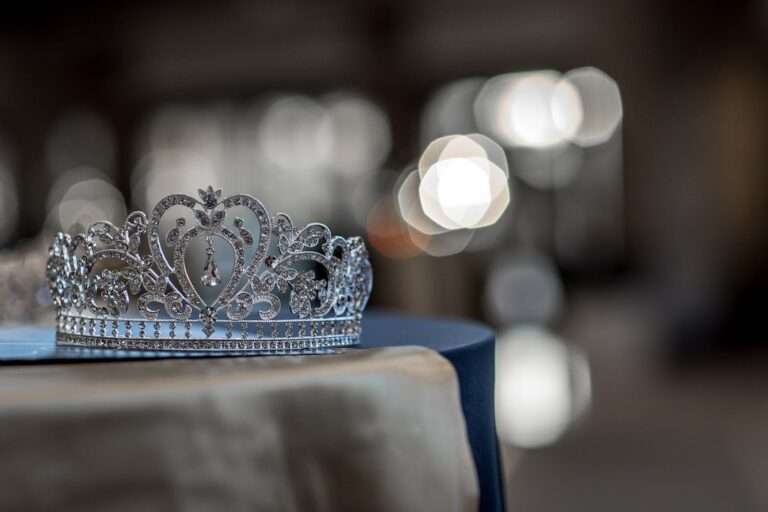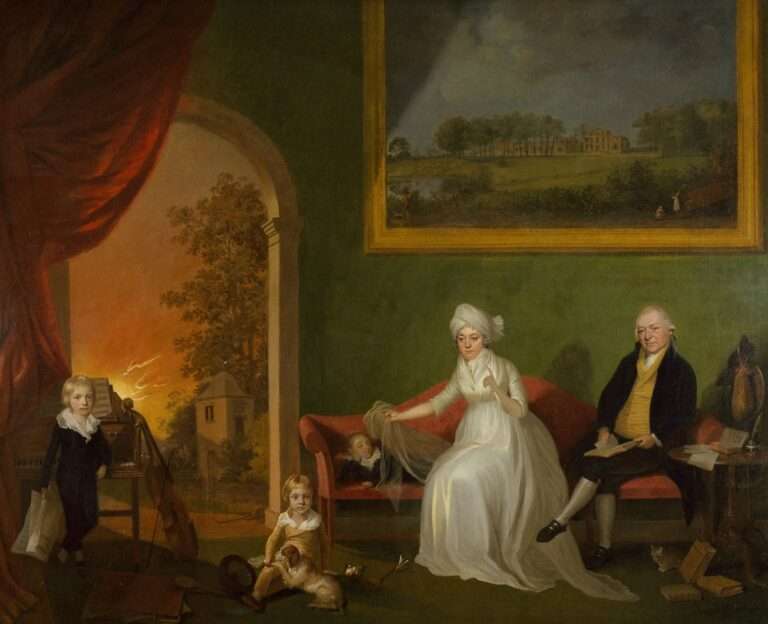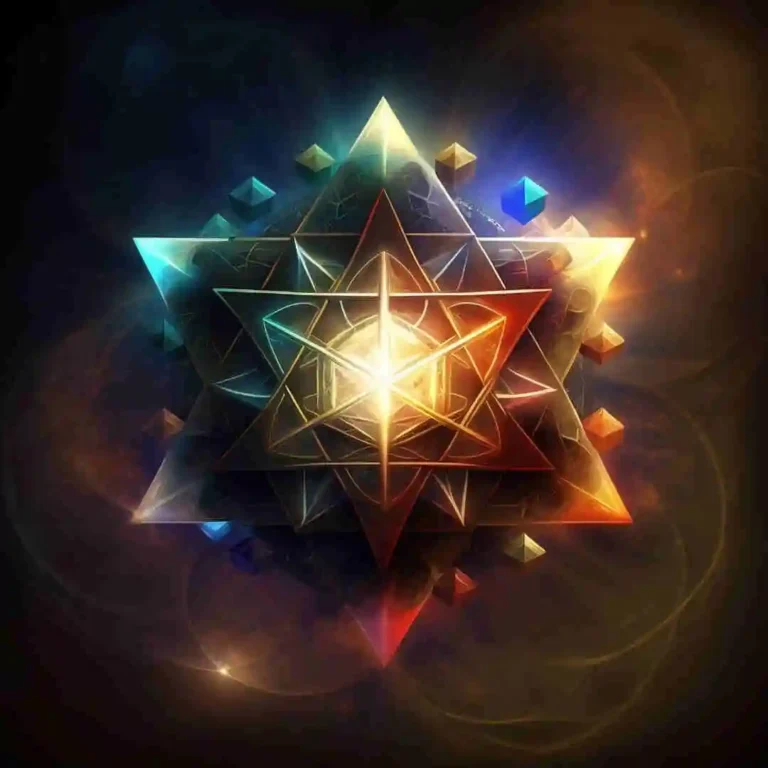What Does The Moon Symbolize? The Ultimate Guide
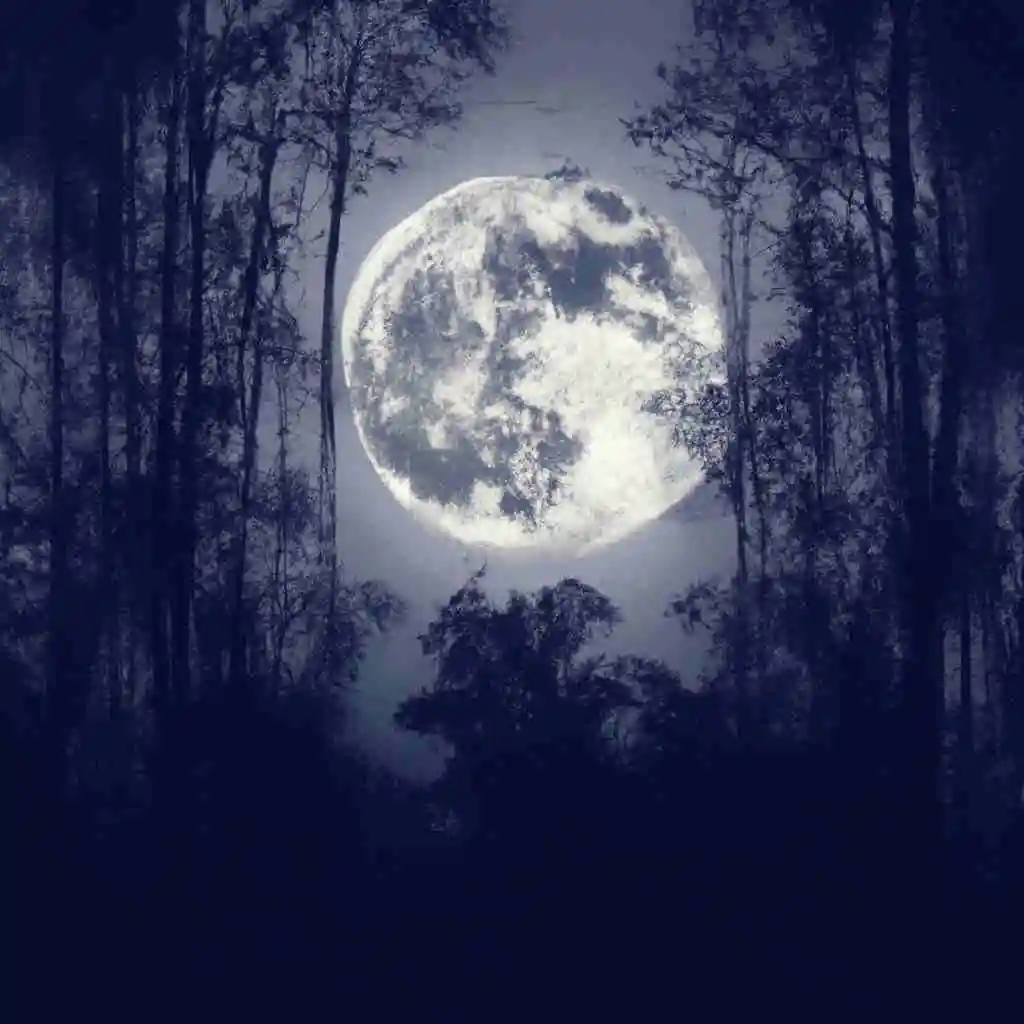
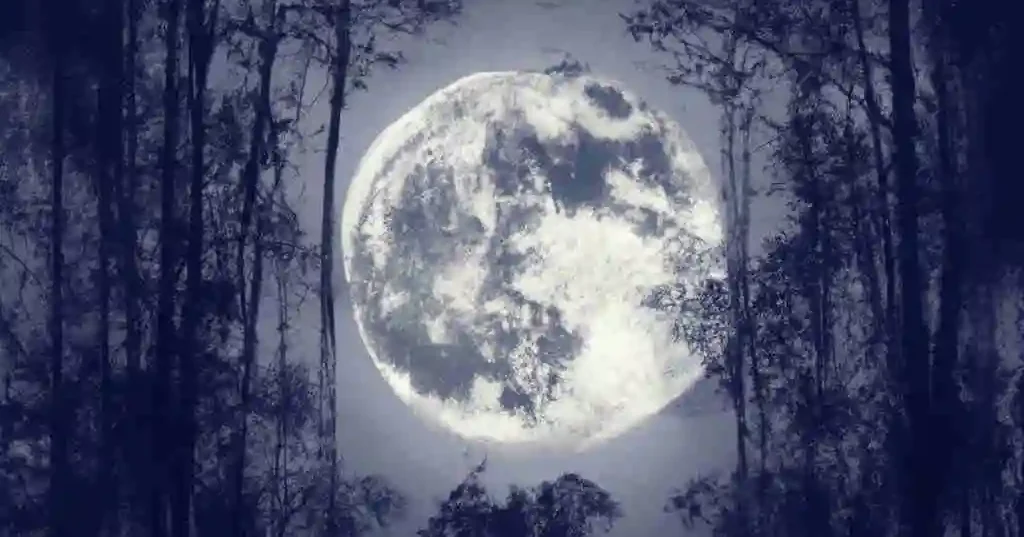
What does the moon symbolize? Discover the captivating aura and profound meanings behind this celestial wonder. This guide is filled with intriguing facts about the magical symbolism of the moon.
Let’s embark on a journey to explore the ultimate power of the moon, from harvest goddesses to werewolves, and unravel its captivating mysteries.
What Is The Meaning of The Moon in Symbolism?
The moon is filled with symbolism. It is often linked to mystery, intuition, and emotions. It represents our inner selves, our unconscious and our ever-changing emotions. Ancient cultures respected the moon and believed it had an effect on us. In astrology, it is connected to the feminine, nurturing qualities, and maternal instincts.
The moon also has a dual nature, light and darkness, representing opposing forces inside and out. Different phases mean different things. A full moon signifies completeness, enlightenment, and higher intuition. A new moon implies fresh starts, growth possibilities, and a chance to resume.
Gazing at the moon in the night sky, we become filled with wonderment. Its glowing beauty triggers our imagination and reminds us of unknowns waiting to be discovered.
Don’t miss out on this cosmic energy that has captivated humans for centuries. Allow it to inspire you to submerge into your emotions and connect with your intuitive wisdom. Honor its light and darkness—for it holds the key to uncovering yourself and exploring profound transformation.
The moon is your guide to search for self-discovery and emotional fulfillment. Trust its mysterious power to lead you to new horizons and illuminate the depths of your being. Embrace it fully, to nurture your soul’s journey and live a life of meaning, intuition, and deep connections.
What Does The Moon Symbolize in Life?
The moon is full of profound symbolism, representing many meanings that appeal to people from all cultures and ages. It stands for femininity, intuition and the never-ending cycle of life. Plus, it symbolizes emotions, secrets and secret wishes, lightening the path to self-discovery.
In mythology, the moon is often linked to goddesses like Selene and Artemis, signifying their sacred female energy. Its delicate light serves as a metaphor for the caring and compassionate qualities of women.
Moreover, the waxing and waning of the moon reflect the varying experiences of life. Just like the moon goes from dark to light and back, our feelings and situations also evolve. This reminds us that change is unavoidable, yet it also offers optimism, since we know that sunshine will come after darkness.
In addition, different cultures have distinct interpretations of the moon’s phases. For example, a full moon is often seen as a sign of abundance and fertility. People believe that it’s an appropriate time to manifest wishes and gather energy for healing.
Surprisingly, scientific research has examined the influence of the moon on human behavior. According to research by University College London, unusual events happen more often during a full moon. The study analyzed data for many years but didn’t find any significant proof to back up the standard beliefs concerning the moon’s effects on mental health or crime.
What Does The Moon Symbolize Spiritually?
The moon’s spiritual symbolism is vast. It represents intuition, emotions, and femininity. It has been treasured across cultures for its mystical essence and powerful meaning.
The following table explains the moon’s spiritual symbolism:
| Symbol | Meaning |
|---|---|
| Intuition | The moon is linked to intuition, showing us our inner wisdom and guiding us to the right choices. |
| Emotions | The moon symbolizes our emotions which ebb and flow like the tides. |
| Femininity | In many beliefs, the moon symbolizes femininity, motherhood, and nurturing. |
| Cycles | The phases of the moon signify the cycles of life, reminding us of birth, growth, death and rebirth. |
| Reflection | The moon’s reflective nature symbolizes self-reflection and introspection. This encourages us to find answers within ourselves. |
| Guidance | The moon is often seen as a protector, providing light in darkness and guidance. |
These interpretations are accepted worldwide, but there’s also an astrological aspect. Cancer’s ruling planet is the moon, signifying emotional intensity and sensitivity.
To unlock the spiritual symbolism of the moon:
- Connect with its energy when spending time outside during a full moon.
- Improve your intuition when meditating under a crescent moon.
- Capture lunar-inspired messages in a dream journal near your bed.
By following these steps, we can invite the mysterious energy of the moon into our lives. Connecting with this celestial body can give us clarity and spiritual understanding.
What Is The Meaning of The Moon in Tarot?
The Moon card in Tarot is imbued with powerful meaning. It symbolizes emotions, intuition, and the subconscious. This card urges us to trust our intuition and be aware of the unknown.
The Moon in Tarot is also linked to our deepest fears. It tells us that facing these fears is essential for growth and transformation. Just as the moon reflects the sun, this card encourages us to embrace our shadows.
The Moon card stands for mystery, illusion, and dreams. It encourages us to explore our subconscious and discover hidden truths. It’s a reminder that things are not always what they seem.
The Moon in Tarot also has a correlation with astrology. It represents our emotional nature and how we react to situations. Understanding this can shed light on ourselves and our relationships with others.
What does The Moon in Tarot mean for you? It’s a call to explore your inner world with courage and curiosity. By trusting your intuition and embracing uncertainty, you can access a wealth of wisdom within yourself.
So don’t miss out on the transformative power of The Moon card. Embrace its symbolism, explore your subconscious, and let it guide you on your journey of self-discovery.
Full Moon Symbolism
The full moon is full of symbolism. It’s a sign of completion and higher emotions. In astrology, it’s a time for manifesting and releasing negative energies. Its light is known to show truths in darkness. It encourages us to embrace ourselves and balance our lives.
It holds special details too. Every so often, two full moons happen in one month – this is called a ‘blue moon’. This amplifies the lunar energy and provides a chance to transform. Different cultures also have their own interpretations and rituals.
A young couple experienced the full moon’s power when they camped beneath it. They shared stories and felt a connection to nature and each other. The moon was a reminder to enjoy life’s small joys and savor moments of connection.
Crescent Moon Symbolism
The crescent moon’s symbolism is diverse and abundant. It stands for many things, including femininity, intuition, and transformation. Ancient times connected it to fertility and growth, as the crescent shape resembled a woman’s womb.
Furthermore, Islamic culture uses it on flags, religious symbols, and architecture. It marks the start of the lunar month and is seen in festivals like Ramadan and Eid.
It has also become popular as a symbol of light and dark balance. It’s a reminder that even in darkness, there is hope for revival.
The origin of the crescent moon is mysterious, but one theory suggests it was based on early civilizations’ observation of lunar cycles and agriculture.
Symbolism of the Moon in Folklore and Legends
The moon is a symbol of mystery, femininity, intuition, and transformation. It holds great significance in folklore and legends. Goddesses like Artemis and Selene embody these qualities. People believe the moon’s phases signify completion and new beginnings. Furthermore, some cultures think it has healing powers and influences emotions.
The moon plays a key role in ancient myths. For example, in Greek mythology, the goddess Selene loved Endymion so much that she asked Zeus to give him eternal sleep on Mount Latmos. That way, she could visit him every night. This shows its romantic symbolism.
The moon is also connected to supernatural beings such as werewolves and vampires in folklore. People think these creatures are triggered by the full moon, adding an element of fear.
Different cultures have their own interpretations. In Chinese culture, a red moon is a bad omen. But, Native American tribes view it as a spiritual guide during darkness.
The moon’s symbolism is more than just physical. Explore ancient legends and folktales to uncover its mesmerizing wonders!
Interpretation of the Moon Symbol in Art
Interpreting the moon symbol in art has a wealth of meanings across cultures and times. It is often linked to femininity, intuition and emotion. Let’s peek into the aspects that make up its interpretation:
- Phase: Full moons signify completion and emotions, whilst crescent moons signify new beginnings and potential. Artists use these phases to express emotional states.
- Colors: White or silver moons signify purity and spirituality; golden or yellow moons signify warmth and happiness. Darker shades represent the mystery or hidden emotions of the night.
- Symbolism: The moon is paired with other symbols, enhancing its meaning. When put with water, it can symbolize tranquility or reflection. With animals like wolves or owls, it stands for wildness or wisdom.
Throughout history, the moon has been an inspiration for artists. From ancient cave paintings to modern abstract art, the interpretations of the moon symbol in art keep evolving. Appreciate its complexity and versatility and experience art firsthand. Perceive its beauty and symbolism and let its profound influence enrich your artistic journey.
Symbolism of the Moon in Different Cultures
The moon has deep symbolic meaning in various cultures. Let’s discover some amazing interpretations and facts about this celestial body.
| Culture | Symbolic Meaning |
|---|---|
| Ancient Egypt | Wisdom |
| Chinese | Yin energy |
| Native American | Connection |
Plus, in Greek mythology, it’s linked with Artemis, the goddess of hunting and childbirth. In Hinduism, the moon is a deity called Chandra.
Let’s think about how these interpretations can be used in daily life. We can take wisdom by seeking knowledge and different perspectives. Balance yin and yang within us. Connect with nature and others to understand and appreciate the moon’s symbolic importance.
By studying these diverse symbolisms and applying them in our lives, we can gain a deeper knowledge of different cultures. Plus, we can use the moon’s wisdom and energy, and find harmony and fulfillment in our lives.
Symbolic Significance of the Moon in Religion
The moon holds great symbolism in many religions. It is linked to gods, divinity, and spiritualism. In Hinduism, it is seen as Lord Shiva and divine femininity. Buddhists see the moon as a representation of Buddha’s teachings and the guidance of enlightened beings. Meanwhile, in Islam, the lunar calendar marks religious events, such as Ramadan.
The waxing and waning phases of the moon symbolize life’s cycles – birth, growth, decay, and death – which are crucial in many faiths. To some, the full moon represents abundance, completeness, and spiritual enlightenment. Some cultures even believe that meditating under the full moon amplifies one’s connection to higher realms.
The Cherokee tribe has assigned special meanings to each lunar month, based on its look or connection to nature. For example, “Blue Moon” stands for an extra full moon in a year, while “Red Moon” means intense emotions and passion. These details show the various interpretations of the moon across cultures.
In Greek mythology, the moon is Selene – the goddess of the night. She was believed to have control over travelers and sailors, who depended on her light for guidance. This mythological tale reminds us of how our ancestors relied on celestial bodies for their survival and spiritual beliefs.
Exploring the symbolic significance of the moon in religion gives insight into how it has been revered throughout history. It is a source of inspiration for humanity’s spiritual journey, and its presence teaches us that despite our cultural differences, we are all connected by this luminary in the sky.
Astrological Meaning of the Moon Symbol
The Moon symbol carries a powerful astrological meaning. It stands for one’s emotions, instincts, and subconscious mind. Let us investigate this symbolism further.
Below is a list of the various astrological meanings connected to the Moon symbol:
| Symbolism | Interpretation |
|---|---|
| Emotions | Inner feelings and intuition |
| Instincts | Desires and gut reactions |
| Subconscious Mind | The hidden elements of our psyche |
The Moon symbol also stands for femininity and motherly energy. It is strongly tied to nurturing, safety, and maternal instincts.
Moreover, the Moon’s phases have different symbolic implications. For instance, a full moon often symbolizes illumination and understanding, while a new moon indicates new beginnings and growth.
Pro Tip: To take advantage of the Moon symbol in astrology, pay attention to its impact on your emotions and intuition. Use this knowledge to get a better understanding of yourself and handle life’s struggles with greater awareness.
Esoteric Interpretation of the Moon Symbolism
The moon’s esoteric meaning delves into its hidden, mystical symbolism. It’s more than its physical appearance. It stands for femininity, intuition, and subconscious emotions.
The moon reflects our inner world. Just like it reflects sunlight, it mirrors our thoughts and desires. Its phases show the stages of our emotional and spiritual path.
The waxing crescent symbolizes growth, fresh starts, and manifestation. This phase teaches us the value of setting aims and taking action.
The full moon stands for abundance, understanding, and completion. Our emotions are stronger, and we can comprehend our lives.
The waning crescent means release, letting go, and giving up. This phase encourages us to give up any bad energies or false beliefs that may be stopping us.
To join with the esoteric moon symbolism, one can add certain practices into life. Meditating during full moons allows introspection and self-reflection. Making rituals around every lunar phase helps to become in sync with its energy.
Also, keeping a dream journal provides hints from the subconscious mind which may appear during sleep under lunar energy.
By embracing the esoteric moon symbolism, one can access inner wisdom, boost intuitive skills, and find a balance between conscious and unconscious selves. The moon isn’t just a celestial body; it’s a strong guide on our journey to self-discovery and spiritual growth.
Symbolic Representation of the Moon in Literature
The moon has been a powerful symbol in literature. It has captivated readers with its mysterious allure. Examples of its symbolism include:
- In “Romeo and Juliet,” represents the love and passion between the two star-crossed lovers.
- In “To Kill a Mockingbird,” symbolizes hope and innocence.
- In “A Midsummer Night’s Dream,” it is seen as a symbol of magic and enchantment.
- In “The Great Gatsby,” represents longing and unattainable dreams.
Other works use the moon to convey themes like mystery, transformation, and time. Authors have also explored darker interpretations, associating the moon with madness or melancholy. Its symbolism has been used across different epochs.
In Greek mythology, Artemis was the goddess of the moon. She was known for her independence and strength.
Mystical Meanings of the Moon Symbol
The moon symbol has a deep history of mystical meanings across the world. It stands for femininity, intuition, and the subconscious. Its phases also have various symbolic representations, like new beginnings in the waxing crescent and release in the waning gibbous. Its connection to water reveals life’s ever-changing nature. It’s a powerful symbol that still inspires individuals.
Unique details about the moon symbol enrich its mysticism. For example, Cancer is related to the moon in astrology. This shows the moon’s importance as an emotional and nurturing energy. Crystals such as moonstone also boost intuition and psychic abilities due to their lunar energy.
History offers interesting stories about the moon symbol. Ancient civilizations used lunar calendars to track time and agricultural cycles. The Mayans developed an accurate calendar based on lunar observations. This allowed them to accurately predict celestial events. These stories help us understand how humans have honored and depended on the moon.
The moon symbol is still mysterious. It captivates art, literature, spirituality, and science. As we try to understand it, we uncover our own connections with nature’s enigmatic marvels.
Related Products
For those wishing to learn more about the symbolism of the moon and discover related products, we have put together some amazing items. Here are five things to check out:
- Lunar Jewelry: Adorn yourself with pieces inspired by the moon’s captivating allure. Crescent-shaped earrings, and lunar phase pendants: these accessories are sure to light up your style.
- Moon-themed Decor: Bring lunar energy into your home with moon-themed decor. Hang stunning moon phase prints, or light up your room with a mesmerizing moon lamp.
- Moonstone Crystals: Unlock the power of moonstone crystals, believed to contain the energy of the moon. These radiant gems are known to bring emotional balance, healing, and new beginnings.
- Lunar Calendars: Follow lunar cycles with a lunar calendar. Feel the ebb and flow of each phase and stay connected to nature.
- Moon-inspired Books: Read stories about the enigma of our beloved satellite. Discover tales, insights, and interpretations that reveal a new perspective on the moon.
Various cultures, throughout history, have had special connections to the moon. It has represented femininity, fertility, enlightenment, and spiritual awakening. For example, when Apollo 11 astronauts traveled to the moon in 1969, they carried a silicon disc with goodwill messages from 73 countries – a gesture of international unity and a reflection of our fascination with the moon.
Let these products be a way for you to embrace the moon’s symbolic power in your life. Jewellery, decor, crystals, calendars, and literature will take you on a captivating journey, transcending time and space.
Are you interested in learning more about symbolism? Check out our articles about the Sun, the Star and the Snake too.

